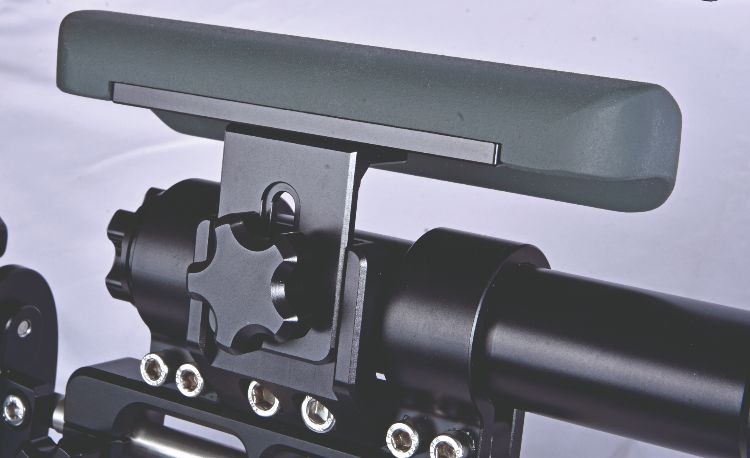 As I finalise what you’re reading now, I feel dreadful. My neck is complaining with every head movement, both wrists are aching, and I feel as though I have a raging hangover, without the pre-party indulgence. Two days ago, a light commercial vehicle, loaded with a couple of tons of sand, smashed into the back of my car on the M25 motorway. That vehicle was doing close to 70 mph, and due to traffic congestion, mine was dawdling at 45, so at least I wasn’t stationary when the impact happened, or my current aches and pains could have been far worse.
As I finalise what you’re reading now, I feel dreadful. My neck is complaining with every head movement, both wrists are aching, and I feel as though I have a raging hangover, without the pre-party indulgence. Two days ago, a light commercial vehicle, loaded with a couple of tons of sand, smashed into the back of my car on the M25 motorway. That vehicle was doing close to 70 mph, and due to traffic congestion, mine was dawdling at 45, so at least I wasn’t stationary when the impact happened, or my current aches and pains could have been far worse.
I’m boring you with these details for a reason, though. This morning, I loaded my hire car with the Daystate Red Wolf Grand Prix and a tin of pellets, and went to my club. Here, what that rifle did on the test range, and how it did it, had me forgetting my injuries, and put a smile back on my face.
I’m a simple person with equally simple processes going on in my head, and the sight of pellets landing exactly where I wanted them to, has always been an immense source of pleasure to me. This Daystate Grand Prix grants me that pleasure, and asks no more than a little guidance in return. The smiles that replaced the winces, today, were not just for me, though; they came from the satisfaction of knowing that the company that pioneered the modern pre-charged air rifle, is still pushing the boundaries, today – and that can only be good for our sport.
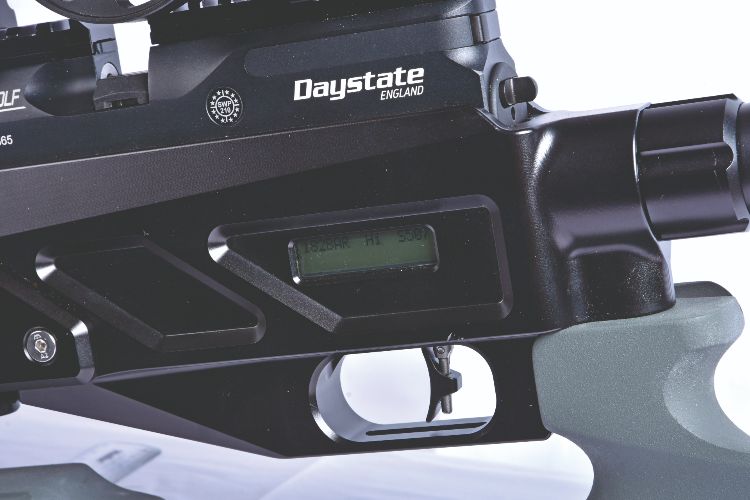 Elsewhere in this feature you’ll find a panel detailing the concept and construction of the Grand Prix, so I’ll do my best to avoid doubling up on that, and concentrate instead on what it does, how it does it, and what it’s like to shoot. Before I get into that, though, here’s an interesting fact for you. Despite the Grand Prix being a dedicated, full-on, ultra-high performance, potential match-winning at any level type of rifle, the majority of them will never be used in any sort of formal competition. At first, I furrowed a brow or two when Daystate’s Tony Belas told me this, but now that I’ve shot the Grand Prix for a solid month, I can totally understand it.
Elsewhere in this feature you’ll find a panel detailing the concept and construction of the Grand Prix, so I’ll do my best to avoid doubling up on that, and concentrate instead on what it does, how it does it, and what it’s like to shoot. Before I get into that, though, here’s an interesting fact for you. Despite the Grand Prix being a dedicated, full-on, ultra-high performance, potential match-winning at any level type of rifle, the majority of them will never be used in any sort of formal competition. At first, I furrowed a brow or two when Daystate’s Tony Belas told me this, but now that I’ve shot the Grand Prix for a solid month, I can totally understand it.
This rifle is a conduit that does everything mechanically possible to encourage the pure pleasure of marksmanship to flow your way. As I said earlier, it puts a smile on your face and makes you happy, and it does so without the need for winning anything but the pleasure of shooting it. Of course, a lump or two of silverware would enhance that pleasure, but it’s certainly not essential, and that’s why plenty of non-competitors will be paying upward of £3,500 to own a Daystate Red Wolf Grand Prix.
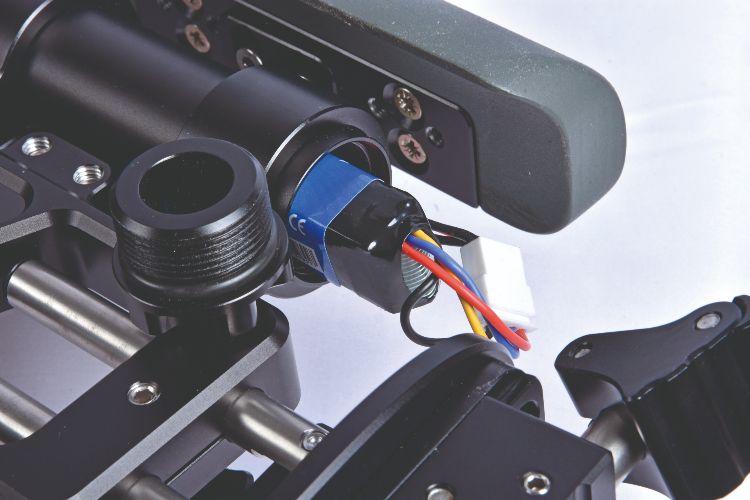 Overview
Overview
What we have in the supplied, padded hard case, is a fully ambidextrous, omni-adjustable, pre-charged pneumatic rifle, with a computer-controlled, electronic, sidelever action, held in an aluminium stock/chassis. The grip, cheekpiece and hamster are matte-finished hardwood, the match-grade barrel is shrouded in carbon fibre and fully-floating, and the whole shooting platform – because that’s what this rifle actually represents – is powered by a combination of compressed air from its carbon-fibre buddy-bottle, which is dispensed via the energy from a Li-poly battery housed in the tubular centre section of the Grand Prix’s butt.
Within the parameters of airgun physics, the rifle’s performance options are almost unlimited, and these cover a wide range of calibre, barrel length and programming set-ups. Within the rifle’s chosen format, further adjustment is available, including magazine capacity, power level, sleep time, display timer, and shot counter reset. There’s also the option to switch the rifle’s cocking lever to right-or left-hand operation, and it can be used in either single-shot, manually loaded mode, or as a magazine-fed, multi-shot rifle.
The purpose, correct usage and adjustment of all of these features is explained in a perfectly practical manner in what I consider one of the Grand Prix’s best components, its comprehensive handbook. Here, step-by-step pictorial guides take the user through everything required to tailor this rifle to whatever type of shooting is required, and it has to be said that this is possibly the best handbook I’ve seen. Full credit to whoever wrote it.
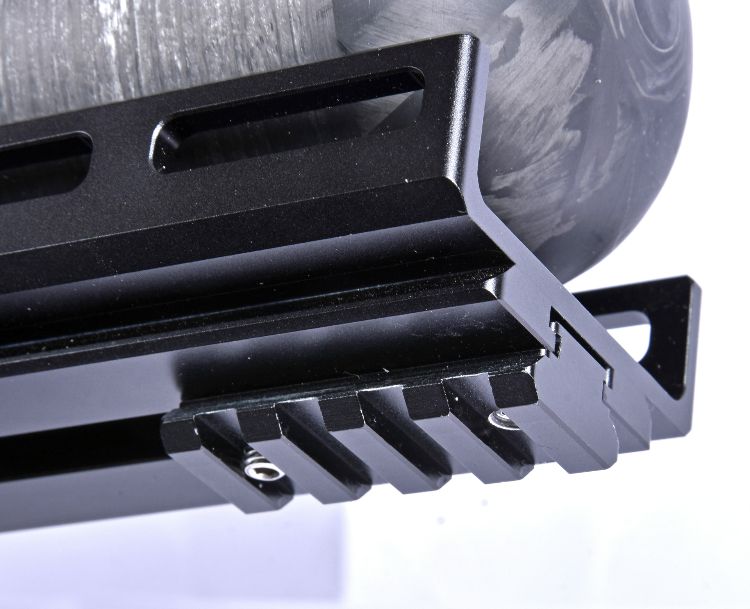 Further details
Further details
As supplied to me in .177 calibre, sub-12 mode, this Grand Prix will produce over 400, electronically regulated shots, from each 250 bar charge of its 480cc buddy bottle. My tests have shown that when using the supplied Rangemaster Sovereign, the Grand Prix’s electronically-regulated action produces a shot-to-shot consistency that averages 9fps over 50 shots.
The Li-poly battery is good for between 3000 and 5000 shots, depending on the rifle’s set-up, and that could represent weeks, or even months, of real-time use. This is all genuinely impressive, and knowing how efficient it is definitely adds to the overall pleasure of using the rifle.
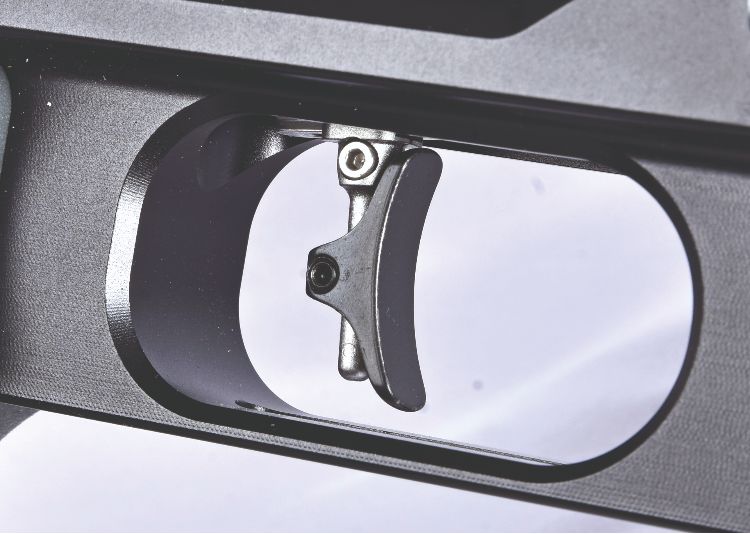 Shooting the Daystate Red Wolf Alpha Grand Prix
Shooting the Daystate Red Wolf Alpha Grand Prix
The real deal comes when the shooting starts, of course, and after plugging in the supplied connector to my air tank and injecting the stated 210 bar – all Daystates have an individually set optimum charging pressure – I slotted the single-shot loading tray into the breech block, and settled on the test bench. This rifle is heavy, at almost 12 pounds once a suitable scope is fitted, and whilst that helps with stability, I was really glad of the bench during extended shooting sessions. When taking on FT targets, normally just two at a time, the heft of the Grand Prix is an anti-twitch benefit, and once it’s set up, the weight, and front-biased balance, really earns its keep.
Meanwhile, back on the bench, life is easy. Operating the short-throw sidelever is all but effortless, due to the absence of a hammer spring, and specifically the need to compress it. After a while, and the onset of familiarity, I could ‘feel’ each pellet feed into the breech, which is another macro-detail I enjoyed about shooting this rifle. All in all, the effortless loading, incredibly precise, two-stage, multi-adjustable trigger, and whisper-quiet launch of each pellet, courtesy of the optional 0dB silencer, makes shooting the Grand Prix an exercise in easy refinement, but it was the downrange accuracy that stole the show for me.
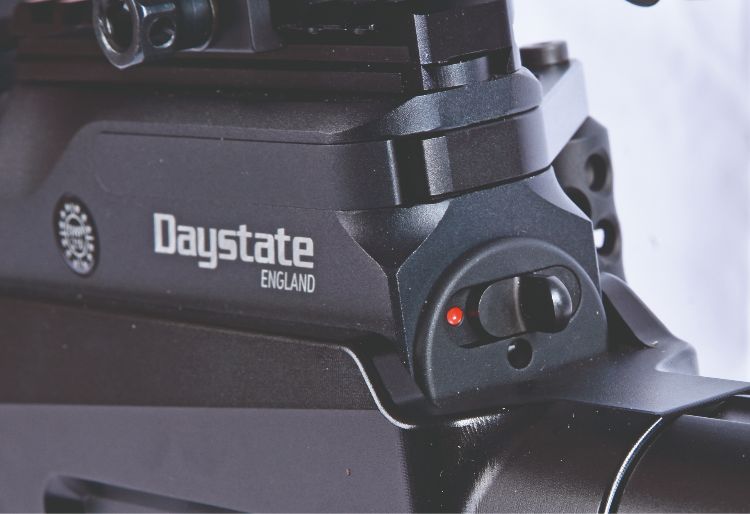 The Grand Prix’s Lothar Walther barrel is supplied to Daystate’s required design, and whatever that design is, it most definitely works. Again, using only the supplied Sovereign pellets straight from the tin, and after just 20 shots to fine-tune the already zeroed rifle, I started producing groups on my 40-yard target that were of ‘cut out and keep’ standard. I wasn’t alone, either, and while the weather held, three other shooters matched my efforts hole for hole. At 55 yards, one-inch spinners were no problem, producing hoots and hollers from those unused to such results.
The Grand Prix’s Lothar Walther barrel is supplied to Daystate’s required design, and whatever that design is, it most definitely works. Again, using only the supplied Sovereign pellets straight from the tin, and after just 20 shots to fine-tune the already zeroed rifle, I started producing groups on my 40-yard target that were of ‘cut out and keep’ standard. I wasn’t alone, either, and while the weather held, three other shooters matched my efforts hole for hole. At 55 yards, one-inch spinners were no problem, producing hoots and hollers from those unused to such results.
Propped on its hamster, solid and stable, the Grand Prix simply blipped out shot after shot with surgical precision. This is such a clinical instrument, and whilst it will never become your ‘Old Betsy’, its jaw-dropping performance will endear it to all who are fortunate to shoot it.
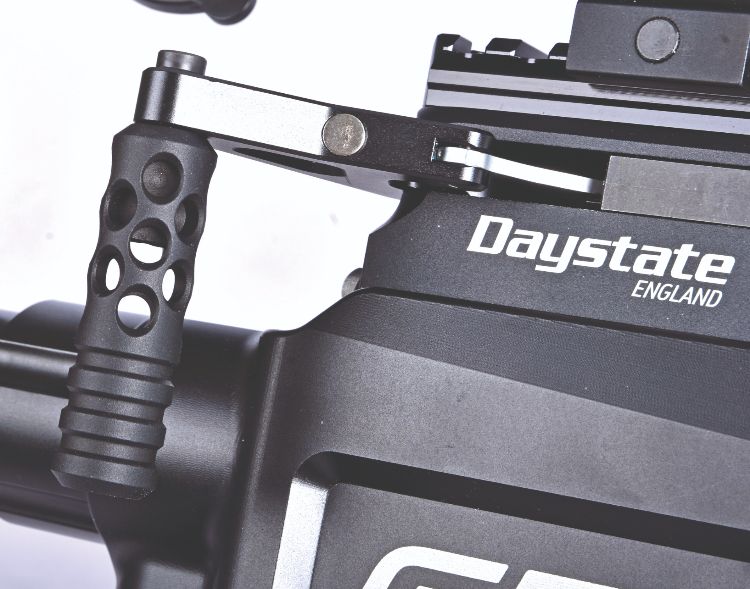 Conclusion
Conclusion
The Daystate Red Wolf Grand Prix is an amazing air rifle. It’s proof-positive of our sport’s place in the shooting hierarchy, and I can fully understand why those who produced it are so proud of it.
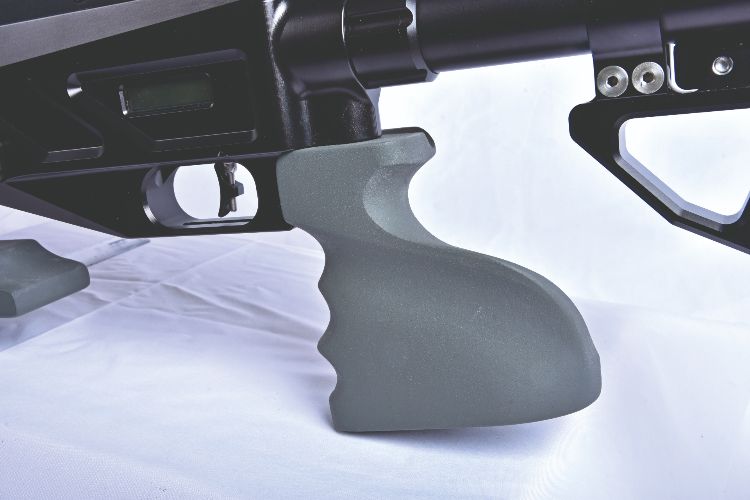
- Conception to creation
-
Tony Belas of Daystate explains how the Red Wolf Alpha was born: “The concept of this rifle really dates to 2018, when Daystate swept the board at the prestigious extreme benchrest shoot, notably with the newly introduced Red Wolf. Those there saw mostly standard Red Wolf rifles with red laminate stocks which did the job admirably, but the Daystate team did wonder if something more bench-focused might help in the future. That idea remained as a thought with them until a chance meeting with Gavyn Jones from PRS engineering who was making a range of accessories for many airguns, including the Daystate Red Wolf, and who, he said, was working on a FT/HFT/benchrest chassis for his own Series Rosso Limited Edition Red Wolf.
Daystate was already working on a field target version of the Red Wolf, and this seemed to be a parallel project with a lot of merit and a direction we might want to go in. Consequently, Daystate encouraged and supported Gavyn through the prototype stage, and eventually into a limited production of his own stocks, with the intention to learn from this initial production and feedback from his customers before Daystate later commissioned him to make a production stock.
Although Gavin was quite experienced in target shooting, Daystate were able to bring in a few of its own design elements as well introducing him to other champion shooters, past and present, to help to refine the initial designs still further.
The intention all along was to not reinvent the Red Wolf, but to add to what was already there, which was an established match-winning rifle with a strong pedigree that could be available almost off the shelf as a 12 ft.lbs., .177, or even an 80 ft.lbs. .30 calibre. The latter format, had by this time, been used very successfully in overseas competitions.
The Grand Prix chassis made exclusively for Daystate by PRS, is a minor marvel of engineering, with each chassis requiring at least three hours machine time, on top of which you must add another hour of assembly and finishing. There are a huge number of adjustments in this stock, something that Terry Doe had been pioneering since the early noughties, which at the time Daystate didn’t have, and to be honest didn’t feel it needed!
However, in the world of out-and-out target shooting, it’s a must. The GP is intentionally front-end heavy, and we retain the high-capacity air bottle, which helps the Red Wolf achieve its best shot-to-shot variation as the large air cylinder helps the digital regulator, by offering it large gulps of high-pressure air. An earlier version of a Red Wolf target rifle prototype rifle used a 300cc air cylinder, but this rifle was intended to be also usable with a high- power action.
The GP is not intended for everyone. It is a specialised top-end rifle, with its focus on winning competitions at the very highest level, such as national and international field target tournaments, the Extreme Benchrest match in Arizona, and the Rocky Mountain Challenge in Utah. Such a rifle needs flexibility in design, because the demands of the ‘one gun challenge’ mean you will be shooting off a bench one day, and taking on standing shots in extreme FT the next. Although the Grand Prix is not a limited-edition rifle, and Daystate and PRS hope to be making it for many years to come, production capacity for the stock is probably limited to 25 a month.
Even if you never intend to buy one, or ever get to shoot one, you can at least admire the detail and machining quality that matches anything found in any firearm, anywhere. The Daystate Red Wolf Grand Prix is not only an ambitious concept brought to reality, but it’s also a high-performance tribute to what’s possible with today’s air rifle technology – and those of us behind its creation are extremely proud of what we’ve achieved.”
- Tech specs
-
Manufacturer: Daystate/PRS
Country of origin: England
Type: Pre-charged, single/multi-shot, competition rifle with electronic action and fully-adjustable, aluminium stock/chassis
Calibre: .22, .177, .25, .30
Cocking/loading: Sidelever (Reversable)
Pellet loading: Via removeable, rotary magazine, or single-shot manual
Trigger: Electronic, 2-stage, fully adjustable, with manual resettable safety
Stock Type: Ambidextrous (optional left- or right-hand grip available), adjustable, aluminium/hardwood
Weight: 4.9kg (10.8lbs) Rifle only
Length: Varies according to adjustment. Approx 9990mm (39-in), 1140mm (45-in) Hi Power model
Barrel: 432mm (17-in) or 600 (23-in) Hi-Power, Lothar Walther, threaded for optional 0Db moderator
Fill pressure: 210 - 250-bar max. Decal on action block states optimum pressure for each rifle
Shots per charge: approx. 500-plus in .22, 400-plus in .177, at sub-12 ft.lbs. configuration
Muzzle energy: 11.6 ft.lbs.
Contact: All good gun shops
RRP: £3,500 as shown. £3,650 Hi Power
PRICE: From £3,500